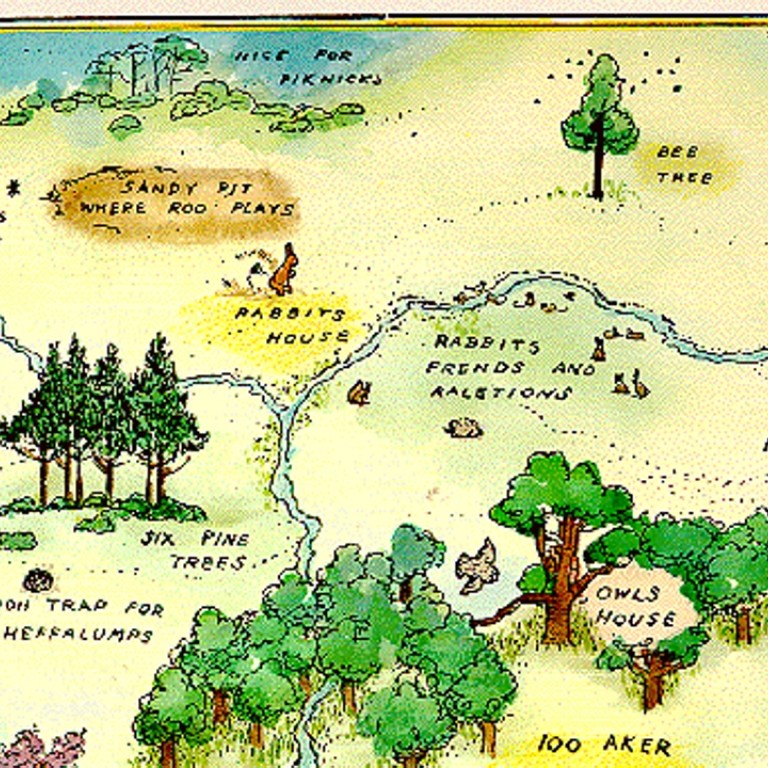
Exploring the English wood where Winnie-the-Pooh and friends roamed
Author’s curiosity about the world of Christopher Robin and his animal pals so lovingly laid out in children’s author A. A. Milne’s tales led her to write a book about Ashdown Forest, near London, the inspiration for Milne’s Hundred Acre Wood, and the farm where Milne lived
Just about everyone knows Winnie-the-Pooh. We’re also familiar with Christopher Robin, the young boy who was one of Pooh Bear’s best friends. And Pooh’s posse: Tigger, Eeyore, Owl and the rest, all of whom roamed the Hundred Acre Wood of A.A. Milne’s writings.
Milne’s stories were fictional, of course. Well, to a point.
“I think people forget there was a real story,” says author Kathryn Aalto. “Disney slicked it up a little bit. Pooh Bear has an American accent and a US mailbox. But there’s a real story.”
SEE ALSO: Oh, bother! England’s bid to reclaim Winnie-the-Pooh from New York
Aalto tells that story in The Natural World of Winnie-the-Pooh: A Walk Through the Forest That Inspired the Hundred Acre Wood.

Aalto is a landscape designer, historian and speaker with master’s degrees in garden history and creative non-fiction. A California native, she and her husband and their three children moved in 2007 to England, where he is a geology professor at the University of Exeter.
She remembers flying into England, looking out of the plane and wondering how her kids would react to their new lives. On her third day, she came across a book on walking.
“That started it. I wanted to get my kids out and give them the same kind of outdoorsy, free-range childhood I had,” Aalto said. “I was also reading them a lot of classics. I was reading Winnie-the-Pooh to them. Because I was here, I was thinking, ‘Who is Christopher Robin? Is there a Hundred Acre Wood?’”

“It’s a gentle landscape ...,” she says. “Right now if I went out, it’d be full of purple heather and yellow gorse, a beautiful tapestry.
“I discovered what an interesting landscape it is, and wearing my hat as a garden historian, I looked into this.”
Aalto’s book takes readers into the forest, a 25 square kilometre tract that is heavily protected and well maintained. “The landscape really does look like the (‘Pooh’ illustrator E. H.) Shepard drawings,” Aalto says. “It’s still sandy by Galleons Lap; there are still lovely streams around, with stony places to sit.”

Also gone is the original Poohsticks Bridge – Posingford Bridge in real life – where Pooh invented the game of Poohsticks, dropping twigs over one side of the bridge then running to the other side to see whose floated by first. The original bridge was utilitarian and unremarkable. But it has been reconstructed several times and is now very English in appearance and closely resembles what’s seen in the books.

In her book, Aalto also devotes a chapter to the flora and fauna of Ashdown: bracken and foxgloves, eagles, warblers and turtle doves.
Visitors can enjoy several three- to five-kilometre walks through the forest. Aalto says a hiker can go half a day without seeing anyone, a solitary, enchanted journey.

That’s not so fantastic. That actually happened to her.
“I came around a corner, and there was someone in a Tigger costume,” she said. “There was a whole family in Tigger costumes. Once a year they come out and have a picnic.”

One of those subsequent owners was Brian Jones, founder of the Rolling Stones, who bought the property in 1968 and who drowned in the home’s swimming pool the following year. Aalto writes that Jones left his mark, painting the ceilings between wooden beams a bright blue, for example. He also installed a pink light over the bathroom sink that Aalto got to see.
“The owner turned it on and said, ‘I’ve only done this six times in the 43 years I’ve lived here.’”
Chicago Tribune

